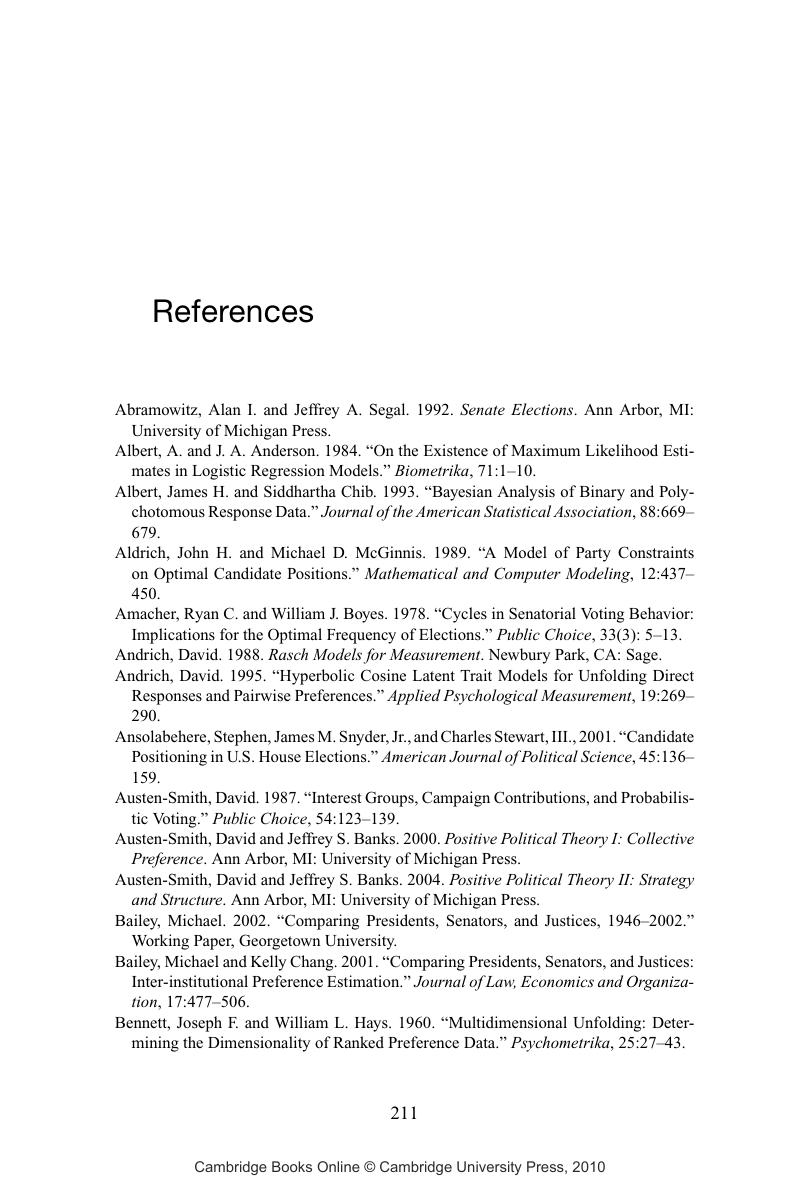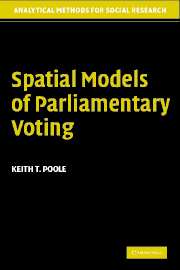Book contents
- Frontmatter
- Contents
- List of Tables and Figures
- Preface
- 1 Introduction
- 2 The Geometry of Parliamentary Roll Call Voting
- 3 The Optimal Classification Method
- 4 Probabilistic Spatial Models of Parliamentary Voting
- 5 Practical Issues in Computing Spatial Models of Parliamentary Voting
- 6 Conducting Natural Experiments with Roll Calls
- 7 Conclusion
- References
- Index
- References
References
Published online by Cambridge University Press: 24 November 2009
- Frontmatter
- Contents
- List of Tables and Figures
- Preface
- 1 Introduction
- 2 The Geometry of Parliamentary Roll Call Voting
- 3 The Optimal Classification Method
- 4 Probabilistic Spatial Models of Parliamentary Voting
- 5 Practical Issues in Computing Spatial Models of Parliamentary Voting
- 6 Conducting Natural Experiments with Roll Calls
- 7 Conclusion
- References
- Index
- References
Summary

- Type
- Chapter
- Information
- Spatial Models of Parliamentary Voting , pp. 211 - 224Publisher: Cambridge University PressPrint publication year: 2005



